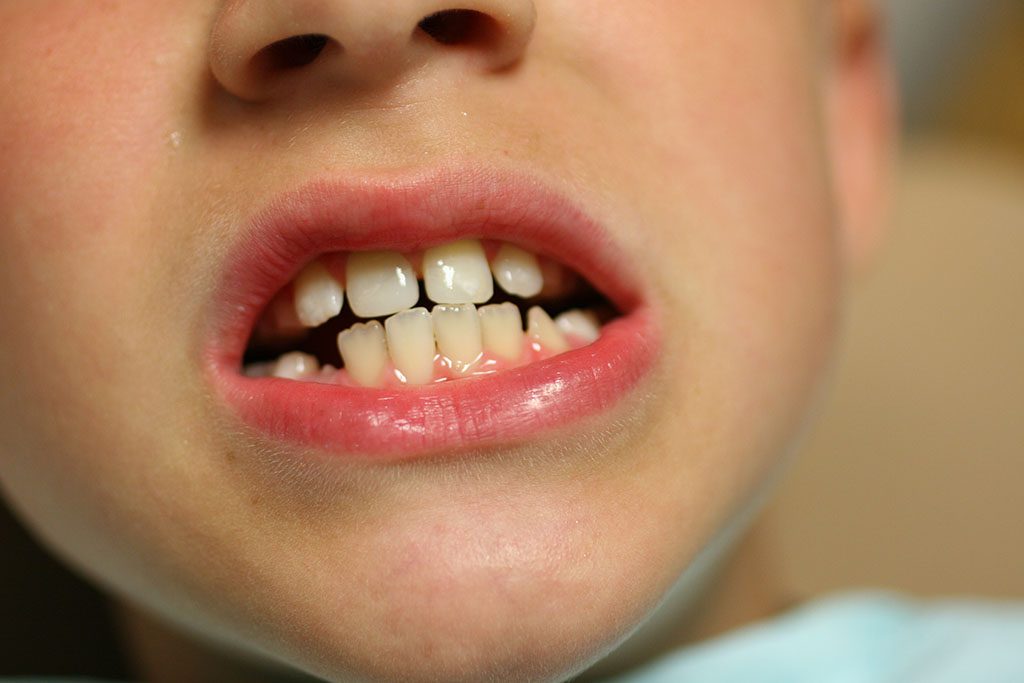Downtown Dental Care can provide a wide range of dental services. We can typically provide every type of dental service without having to refer you to other specialties. This flexibility saves you time and keeps your total dental care within one practice. Our emphasis is on total preventive care for our patients. Total care begins with regular hygiene visits, regular checkups and continued home oral health routines.
Our practice also provides the highest-quality services for restoring mouths that have been damaged by dental disease and injury and common problems that require cosmetic dentistry. Our primary goal for our patients is to achieve and maintain optimum oral health through advances in techniques, technologies and by maintaining their scheduled dental exams.
Composite Bonding
Bonding is a common solution for:
- Fixing or repairing chipped or cracked teeth
- Reducing unsightly gaps or spaces between teeth
- Hiding discoloration or faded areas on the tooth’s surface
Often used to improve the appearance of your teeth and enhance your smile. As the name indicates, composite material, either a plastic or resin, is bonded to an existing tooth. Unlike veneers or crowns, composite bonding removes little, if any, of the original tooth.

Composite bonding has many advantages:
- It is a quick process, which typically lasts less than one hour.
- It does not reduce the tooth’s original structure and is relatively inexpensive.
- Composite resins come in many different shades and provide better matching of shades to the natural color of your teeth.
- Composite bonds, however, are not as durable and long-lasting as veneers and crowns and may need to be re-touched or replaced in the future.
Composite bonds stain more easily and therefore require proper care and regular cleaning. In order to ensure the longest possible duration of the bonding, composites should be brushed and flossed daily. Common staining elements include coffee, tea, tobacco, foods and candy.
Root Canal
A root canal is a procedure that extracts decayed pulp from the central part of the tooth, reshapes the canal and replaces it with strengthening filler.
A cavity is the result of superficial decay of the enamel of the tooth. Left long enough, this decay can burrow into the deeper reaches of the tooth, causing extensive damage to tooth structure. When the damage goes beyond what can be treated with a filling, dentists can perform a root canal (or endodontics), preserving the tooth and retaining its original integrity; thereby, saving a tooth that in the past would have to have been pulled.
Procedure:
- The patient undergoes anesthesia.
- A dental dam is used to isolate the tooth.
- The tooth is opened to allow for removal of infected or dead dental pulp.
- The tooth is comprehensively cleaned, including any cracks and canals.
- With special tools, the doctor reshapes the canals.
- The tooth is filled again with cutting edge biocompatible filling material.
- A temporary covering is used to cover the access opening.
- Patients MUST see their regular dentist quickly for a permanent restoration of the tooth.
Tooth Extractions
Your third molars are more commonly called “wisdom teeth.”
Usually appearing in the late teens or early twenties, third molars often lack the proper space in the jaw to erupt fully or even at all.

This common condition is called impaction. When any tooth lacks the space to come through or simply develops in the wrong place of your jaw and becomes impacted, problems can arise. Primarily, damage to adjacent teeth and crowding occur.
In certain cases, the wisdom tooth that cannot come through becomes inflamed under the gums and in the jawbone, causing a sac to develop around the root of the tooth that then fills with liquid. This can cause a cyst or an abscess if it becomes infected. If either of these situations goes untreated, serious damage to the underlying bone and surrounding teeth and tissues can result. To potentially stave off this result, an extraction of one, several or all of the wisdom teeth may be advised. If that is the case, we have the equipment and training needed to perform such extractions, with an absolute minimum of discomfort. Ask our staff for more information regarding tooth extractions if you feel you may need one.
Crowns and Bridges
Your third molars are more commonly called “wisdom teeth.” Usually appearing in the late teens or early twenties, third molars often lack the proper space in the jaw to erupt fully or even at all. This common condition is called impaction. When any tooth lacks the space to come through or simply develops in the wrong place of your jaw and becomes impacted, problems can arise. Primarily, damage to adjacent teeth and crowding occur.
In certain cases, the wisdom tooth that cannot come through becomes inflamed under the gums and in the jawbone, causing a sac to develop around the root of the tooth that then fills with liquid. This can cause a cyst or an abscess if it becomes infected. If either of these situations goes untreated, serious damage to the underlying bone and surrounding teeth and tissues can result. To potentially stave off this result, an extraction of one, several or all of the wisdom teeth may be advised. If that is the case, we have the equipment and training needed to perform such extractions, with an absolute minimum of discomfort. Ask our staff for more information regarding tooth extractions if you feel you may need one.
Crowns
A crown is a permanent covering that fits over an original tooth that is either decayed, damaged or cracked. Crowns are made of a variety of different materials such as porcelain, gold, acrylic resin or a mix of these materials.
Porcelain generally has the most natural appearance, although it is often less durable.
The treatment plan for a patient receiving a crown involves:

- Numbing the tooth to remove the decay in or around it.
- Re-sculpturing the tooth to provide an ideal fit for the crown.
- Making an impression of your teeth in order to create a custom-made crown (usually takes one to two weeks).
- Making a temporary crown out of acrylic resin and fitting it onto the tooth during the interim period when the permanent custom-made crown is being created.
- Applying the permanent crown (when received from the lab) by removing the temporary crown and fitting the permanent one onto the tooth.
- After ensuring that the crown has the proper look and fit, the dentist cements it into place.
Once the procedure is completed, proper dental hygiene, including daily brushing and flossing, is required to maintain healthy, bacteria-free teeth, gums and crowns. This helps in the prevention of gum disease. Given proper care, your crowns can last a lifetime.
Bridges
A bridge is a dental device that fills a space that a tooth previously occupied. A bridge may be necessary to prevent:
- Shifting of the teeth that can lead to bite problems (occlusion) and/or jaw problems and resultant periodontal disease.
- Bridges safeguard the integrity of existing teeth and help maintain a healthy, vibrant smile.

There are three main types of bridges, namely:
- Fixed bridge- this is the most popular and consists of a filler tooth that is attached to two crowns, which fit over the existing teeth and hold the bridge in place.
- The “Maryland” bridge is commonly used to replace missing front teeth and consists of a filler that is attached to metal bands that are bonded to the abutment teeth. The metal bands consist of a white-colored composite resin that matches existing tooth color.
- The Cantilever bridge is often used when there are teeth on only one side of the span. A typical three-unit cantilever bridge consists of two crowned teeth positioned next to each other on the same side of the missing tooth space. The filler tooth is then connected to the two crowned teeth, which extend into the missing tooth space or end.
Veneers
Veneers are thin, semi-translucent “shells” typically attached to your front teeth. Veneers are customized from porcelain material and permanently bonded to your teeth. Veneers are a great alternative to otherwise painful dental procedures to improve the appearance of your smile.
Common problems that veneers are used for:
- Spaces between the teeth
- Broken or chipped teeth
- Unsightly, stained or discolored teeth
- Permanently stained or discolored teeth
- Crooked or misshapen teeth
Veneers are a great aesthetic solution to your smile that may even help you avoid orthodontic treatment. Subtle changes to your smile can be achieved with veneers, and in most cases, veneer application is completed in only two office visits.
Please contact our office if you have any further questions on veneers.
Luma Cool Whitening
Your teeth will darken over time. Changes in the color of your teeth can be caused by such factors as the food and beverages consumed (like coffee, tea and soda). Other known factors for discoloration may include childhood medications or illnesses, tobacco use or improper oral hygiene.
In office bleaching that takes approximately 2 hours. A protective gel is placed over your gum tissues so they do not become irritated. A series of 8 bleach gels are used on your teeth followed by application of the curing light in order to activate the gel. You are sent home with custom trays for continued whitening for two weeks, twice a day, for 30 minutes each. Some sensitivity may be experienced. Sensitivity toothpaste should lessen any sensitivity. I condition persist, please call our office.
You will be given some post-whitening care instructions after your procedure. It is important to maintain a good oral hygiene regimen post-whitening to preserve your bright, white smile. We also recommend occasional touch-ups with the Take-Home Gel. Your smile will always be brighter than it was before the procedure, but by following these simple instructions, you can retain your results for a long time!
Although the Luma Cool System can help almost anyone, it may not be as effective in every case. We can determine if tooth whitening is a possible option for your case.



